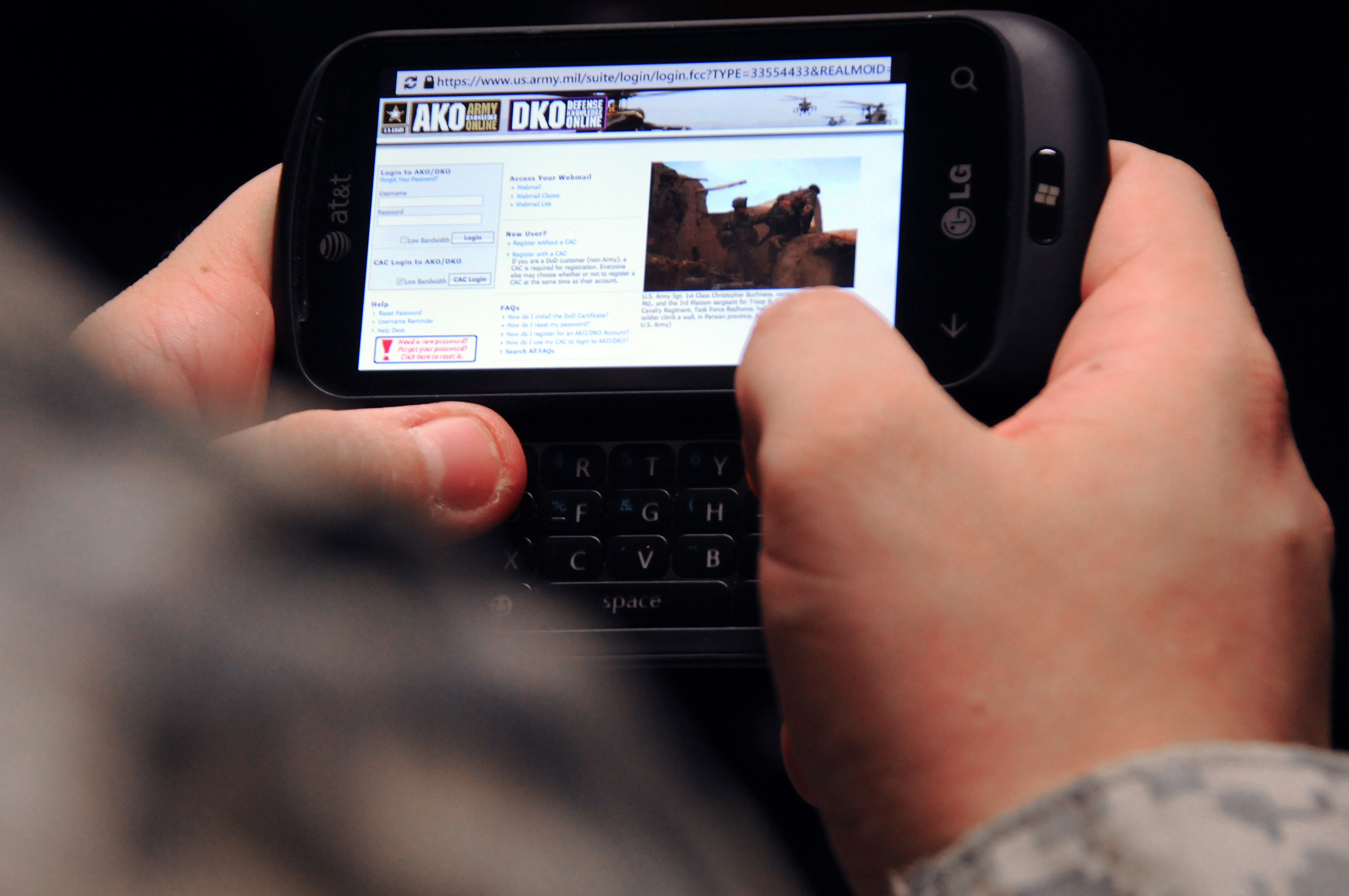WASHINGTON (Army News Service, Feb. 28, 2011) -- It's not written in stone that every Soldier will get an Android phone or an iPhone -- but signs are pointing to it.
During a bloggers roundtable Feb. 24, Lt. Gen. Michael Vane, director of the Army Capabilities Integration Center, discussed the latest developments in how the Army is evaluating smartphone technologies and software applications to provide Soldiers the ability to learn anytime and anywhere.
The general said it was too soon to say for sure if Soldiers would all one day carry smartphones to enhance both training and operations, but he did say that in the next six to eight months, the Army would have had time to look at assessment results from pilot programs it is currently running involving smartphone technology.
"Whether or not we recommend that all Soldiers carry a smartphone would be sort of out in front of the conclusions," he said. "Though many people are already suggesting that that's a possibility. Even I have said there's a long-term vision here that would say if we can figure out the smart cost-beneficial way of doing this, this probably does make sense in the long run."
Vane did say, however, that successes with smartphone technology are more evident in the training environment than in the operational environment. He said in six to eight months the Army would finish cost-benefit assessments and be able to provide recommendations to Army senior leadership.
Challenges with smartphone technology are twofold, Vane said. First, there are cultural challenges. Decisions makers -- those who decide how to spend money in the Army, are not nearly as savvy with the technology as those who want to be able to use it -- those he describes as "digital natives."
"People that haven't grown up with that have a cultural challenge with the use of these technologies and the ability to pick one of these things up and operate them very quickly, to look at a smaller screen, use a different sort of keypad -- all those sort of kind of things... there's a cultural challenge that is part of the issue for the more senior people," Vane said.
There's also concerns about security, Vane said. "It's both a technology problem and a discipline problem, or challenge for us on the network."
The security issue, he said, is one thing the Army might work through, however, because in some cases the value of perishable data now, outweighs the risk posed of handling it over an unsecure network, like cell phones might provide.
In Afghanistan, the enemy is already using cell phones successfully, Vane said. The Army can make the "risk decision" associated with information assurance to decide when is the right time to use an unsecure network to transfer a particular kind of information.
"One of the most significant feedbacks you get from Soldiers in theater is they look at their Afghan army compatriots or the Taliban guy, who has a cell phone, and then the Army guy looks at his MBITR or his 117G radio and we want to deny that capability to our own Soldiers even through the enemy is using them'" Vane asked.
"Can we operate quickly enough with just that kind of data that is perishable and not classified, and reduce the risk -- that's what we're experimenting with in these pilots," Vane said. "We think that may be a risk worth taking for perishable battlefield data."
Vane said that the Army isn't specifying a particular brand of smartphone, or software -- just "mission command- essential characteristics" within which the Army can quickly purchase commercial off the shelf technology.
Related Links:
'Digital rodeo' helps Army look at smart-phone apps
Soldiers test smart phones in field exercise
Yongsan Garrison unveils smart phone technology bridging paper, web


Social Sharing